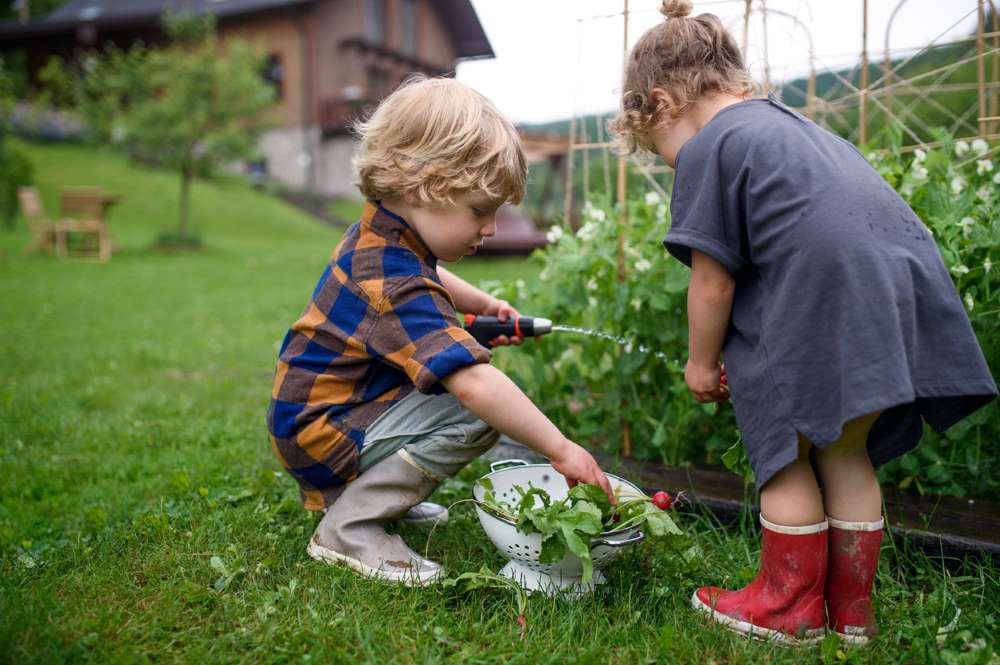
Each time we drive fossil fuel burning cars, bump up the heat in our homes and purchase beef, we contribute to lasting ecological destruction. The greenhouse gases emitted into the atmosphere takes centuries to degrade. If we cannot drastically alter our environmentally degrading behaviors, future generations will experience the consequences of our actions.
Fortunately, we can use the power of education to alter our consumption patterns. When we mold the minds of our future leaders through sustainable awareness, we can instill harmony back into the global ecosystem. To effectively educate kids about sustainable living, parents must adopt a concrete understanding of sustainability.
What Is Sustainability
Environmental sustainability evaluates society’s engagement with air, water, food, energy and raw materials. It avoids the depletion of natural resources to protect the components of the global ecosystem. Because many vital resources on Earth are non-renewable, we must use them wisely.
Sustainable living honors this goal of conservation to protect the generations to come. It is essential to practice green living to reduce our greenhouse gas emissions. As we emit air pollutants into the environment, we contribute to the enhanced greenhouse effect.
The greenhouse effect is a natural process the planet uses to maintain a life-sufficient temperature. Atmospheric pollutants absorb the sun’s energy, convert it to heat, warm the environment and release excess heat to space. When we alter the number of contaminants in the air, the planet has difficulty releasing heat before the environment’s temperature increases past its limit.
If Earth’s temperature increases, more plant and animal species will go extinct, affecting all aspects of life. When we teach our children about the effects of our actions, they can make educated decisions about their lifestyle patterns. Transportation, diet, clothing and composting are the main topics parents should discuss with their children when teaching them about sustainable living.
Transportation
Many children enjoy traveling outside of their hometown or school district. It is essential to teach your kids about the scope of the world and the environmental effects of traveling.
Around 29% of all greenhouse gas emissions derive from the transportation sector. Cars, buses, planes and trains burn fossil fuels to power their trips. Fossil fuels are non-renewable energy sources that utilize oil, coal and natural gas.
Scientists developed new methods of channeling renewable energy sources to limit the atmospheric pollution caused by greenhouse gas emissions. Electric vehicles powered by solar or wind energy can offer a sustainable solution to ecological problems. Green lifestyles can maintain modern practices with less environmental harm.
The most sustainable form of transportation relies on human power. Walking, biking and skating can effectively transport individuals without emitting any greenhouse gases. You can incorporate these forms of transportation into your family’s routine to teach your kids the importance of limiting their contribution to atmospheric pollution.
Diet
Our consumption patterns also have a significant effect on the state of Earth. Purchasing sustainably sourced foods can conserve water and the atmosphere. Your family can shift their diet to reflect sustainable practices.
Consuming a flexitarian diet can reduce your family’s greenhouse gas emissions by 52% annually. Flexitarians eat a predominantly plant-based diet with the occasional inclusion of meat. Rather than relying on methane emitting beef for protein, a flexitarian may opt for sustainable seafood to sustain their nutritional needs.
Sustainable seafood contributes significantly fewer air pollutants than land-based farm animals. Consciously caught marine life can enhance aquatic biodiversity and preserve the ocean. Consuming eco-conscious seafood can help your family lower their carbon and water footprints.
You can increase the sustainability of your fruit and vegetable consumption by growing your food. Building a home garden can teach your kids about the importance of their diet. When you produce your own fruits and vegetables, you limit the transportation emissions, pesticides and synthetic fertilizers used to grow food.
Secondhand Consumption
Everything, from the clothes on your back to the toys on your floor, has an environmental impact. It takes roughly 10,000 liters of freshwater to develop one kilogram of cotton. If you look in your closet, you can quickly calculate your water footprint.
The clothing industry uses harsh chemicals and dyes in production, which end up in the ocean. In the sea, these elements contribute to aquatic destruction. Further, these companies take freshwater from individuals who otherwise would not have access to it. Around 884 million people lack safe drinking water globally.
To preserve freshwater sources and the ocean, your family can purchase secondhand goods. When you teach your child about thrifting and its impact on the environment, they are more likely to utilize the consumption pattern throughout their life.
Composting
Food waste poses a significant threat to natural resource conservation. Around one-third of the global food supply is thrown away each year. We could feed three billion individuals with the amount of waste we produce annually.
To repurpose the nutrients produced by the agricultural industry, you can start composting your food scraps. Your family can build a compost bin for your backyard to convert food waste to nutrient-dense fertilizer for gardening. This method of sustainability also limits one’s reliance on garbage companies that emit carbon in their transportation process.
Actions to Lessons
When it comes to teaching sustainability to your children, it is best to lead by example. Get the whole family involved in eco-conscious activities like biking to your favorite restaurants and planting seeds in your garden. As you practice sustainable living, ensure that your kids understand how their actions impact the world around them.



























